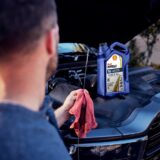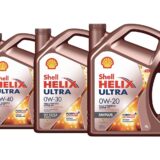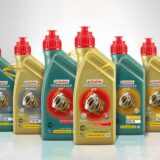
Shell: A balanced approach is necessary for e-fluids
Hardware designs of electric vehicle drivetrain systems by major Chinese OEMs continue to evolve. There is a trend for battery electric vehicles (BEV) to integrate the drive motor, gearbox, and electronic control system to achieve a lighter vehicle weight and higher efficiency. With each of these components simultaneously in contact with the lubricant, formulation requirements are complex, and e-fluids remain at the early stages of design.
Leo Kin-Mun, senior global product application specialist at Shell Singapore Pte Ltd., delivered a presentation on China OEM’s Lubricant Technology Trends: Experience and Challenges in Applications of Shell E-fluids, at F+L Week 2023 on June 15. In his talk, Kin-Mun emphasised the need for dedicated BEV lubricants for various components and configurations.
However, he also highlighted several problems associated with hybrid electric vehicles (HEVs) and BEVs that Shell has identified in cooperation with OEMs during shared test development.
Balancing scuffing, wear protection and e-performance is a key challenge for e-transmission fluids, he says. The FZG test, based on ASTM D5182, is a popular choice for OEMs for evaluating wear protection properties at the interface of a loaded set of gears. While high FZG performance means excellent wear protection, the nature of additive use means it tends to have a negative effect on corrosion protection, says Kin-Mun. Wear and hardware protection must be achieved, without compromising on the remaining properties of the lubricants, he says.
The Shell representative also affirmed that standard foam tests alone are not able to differentiate the high-speed foam performance of the oil. Kin-Mun outlined a need for a more representative test that simulates the actual running condition of the e-motor. Shell has worked with customers to develop a better solution for foaming issues caused by high speed stirring, he says.
Copper wire is exposed to various levels of corrosion depending on the operating conditions and design of OEMs. Kin-Mun also detailed the results from a non-standard industry test on copper wire corrosion where dedicated e-fluids provided far superior protection than standard automatic transmission fluids (ATF) and manual transmission fluids (MTF).
Kin-Mun stressed the importance of co-engineering and collaboration with OEMs as the best way to achieve effective, tailor-made e-fluid solutions.












